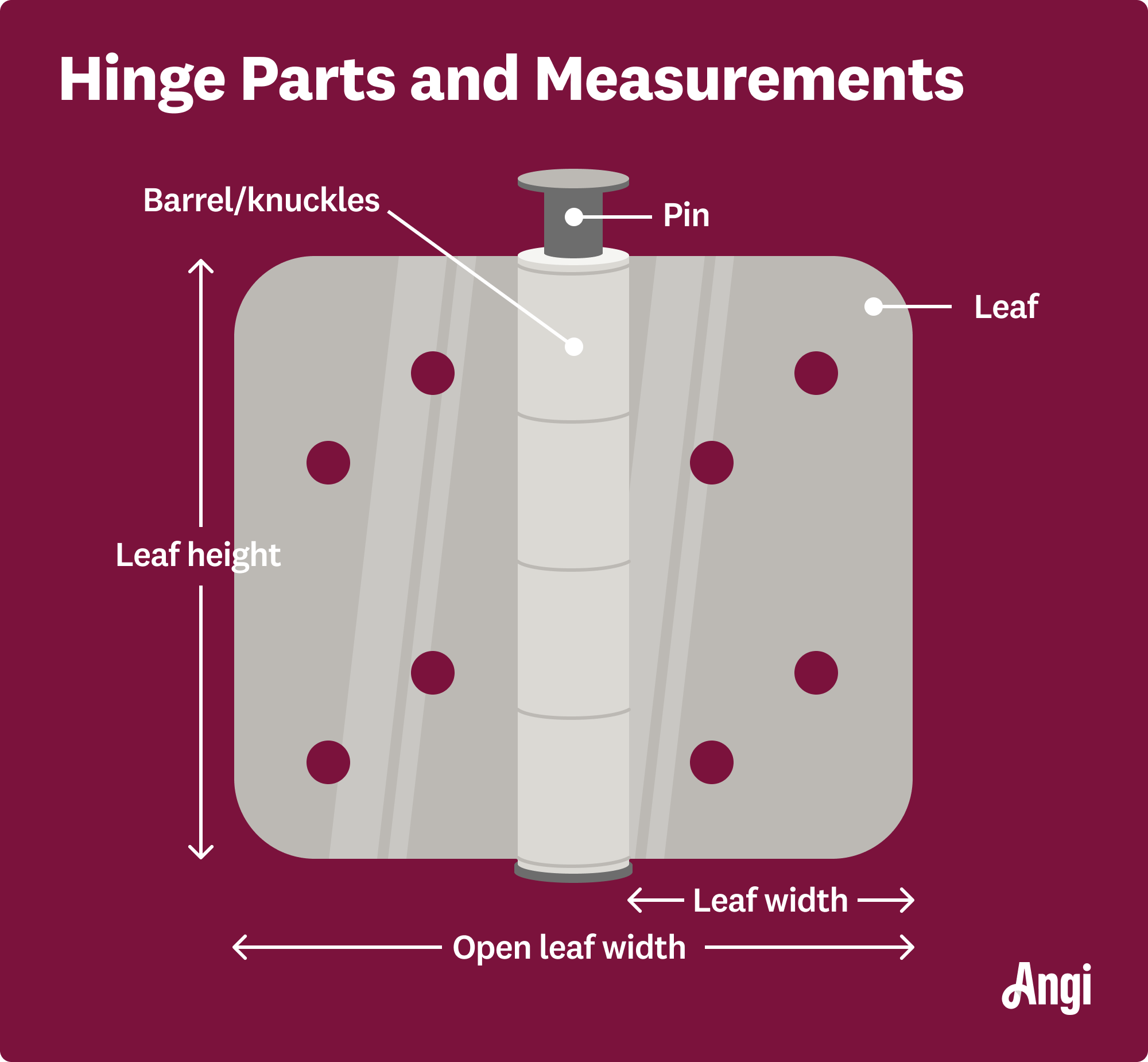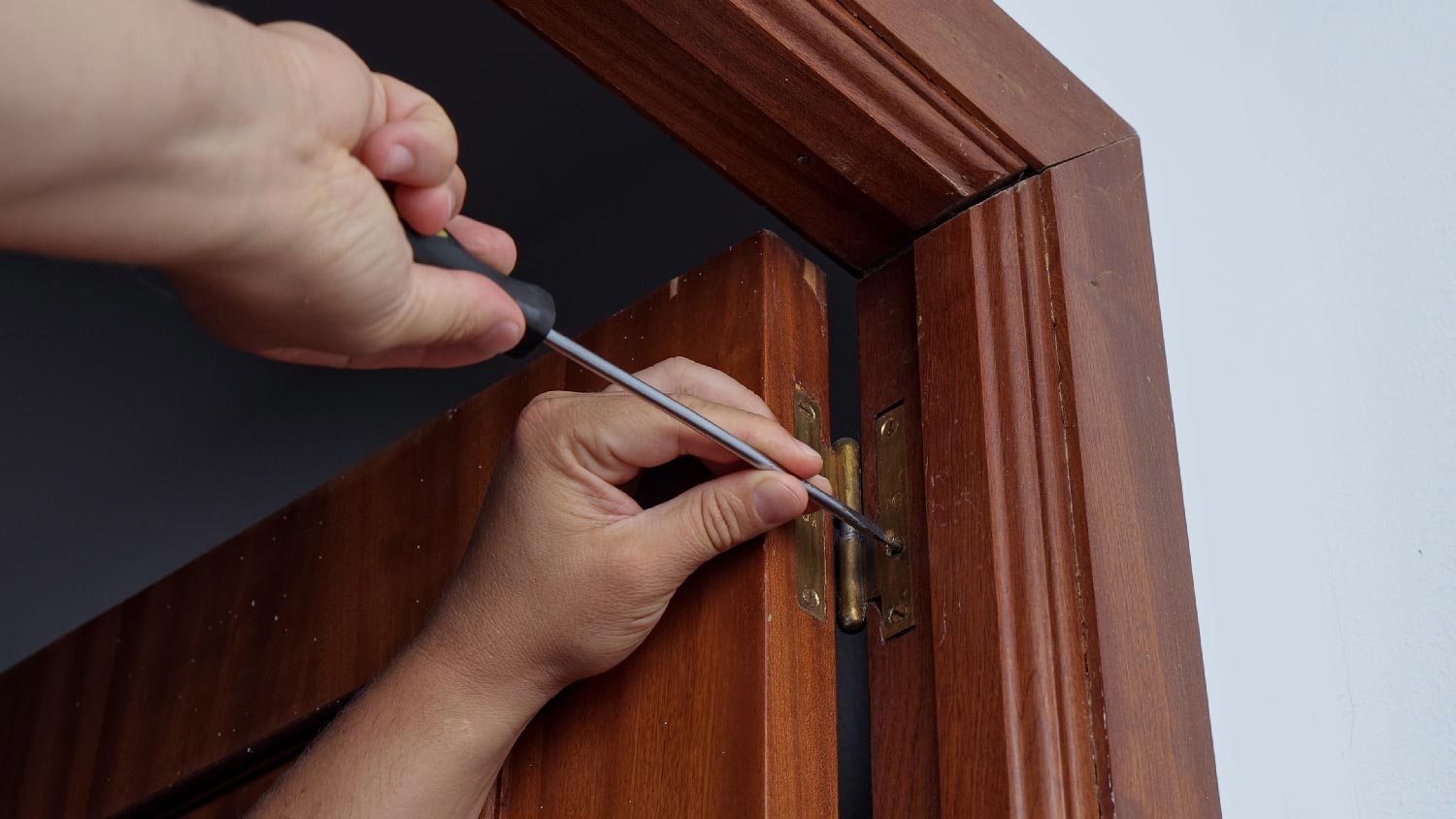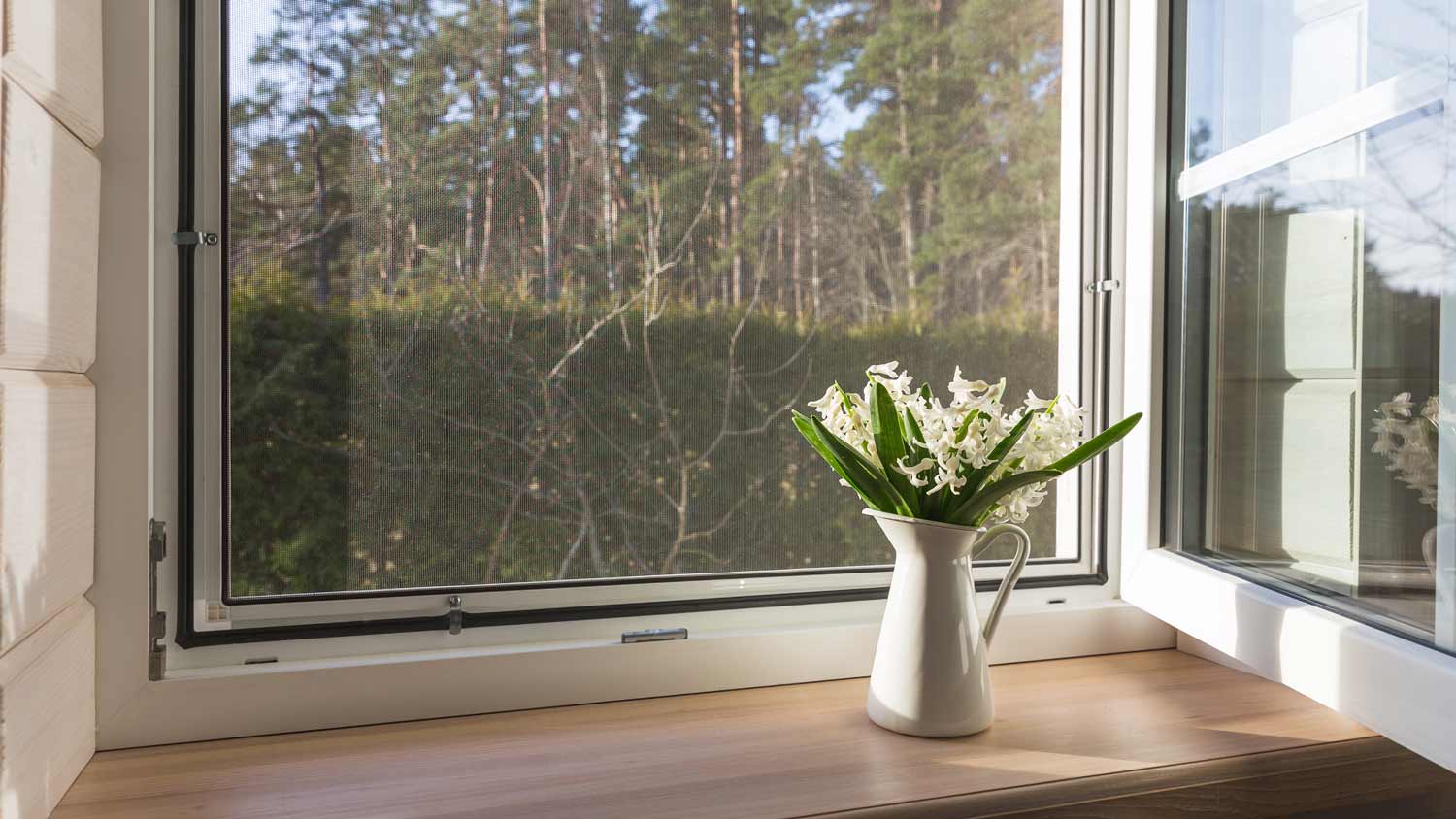What Size Door Hinge Do I Need? Don’t Overlook This Small Detail
Doors can swing freely when they’re hinged correctly


A standard interior door requires a 3 ½-inch by 3 ½-inch hinge.
Hinge sizes vary from 3 ½ inches up to heavy-duty 6-inch models.
The larger and heavier the door, the more hinges you’ll need.
Hinge materials can add stability and durability, aiding the door’s longevity.
The basic parts of a hinge and standard hinge measurements can help you determine the right hinge size for your door.
Don’t underestimate the power of a good hinge, large or small. But what size door hinge do you need? It’s all based on the door’s height, width, and weight. You don’t want to go too small when choosing a hinge size because they need to support the door’s weight. Keep reading to learn more, and when in doubt, size up for happier hinges.
What Is a Standard Hinge Size?

Standard residential hinges are 3 1/2 by 3 1/2 inches and fit a standard 32-inch wide interior door. Residential door hinges are made in ½-inch increments and range in size from 3 to 6 inches, though 5- and 6-inch hinges are more common on large or commercial doors.
Heavy-duty hinges in stainless steel and steel can handle large doors, like exterior, commercial, and specialty doors. Finding the right hinge size for these types of doors ensures the integrity of the door and its ability to function correctly.
Hinge Sizes
A hinge’s size determines the size and weight it can hold. The chart below shows standard and specialty hinge sizes with the door width and thickness they’re designed to hold.
| Hinge Size (Inches) | Door Width (Inches) | Door Thickness (Inches) |
|---|---|---|
| 3 ½ | Up to 32 | 1 ⅜ |
| 4 | 32–36 | 1 ⅜ |
| 4 ½ | Up to 36 | 1 ¾ |
| 5 | 36–48 | 1 ¾ |
| 6 | Over 48 | 1 ¾ |
| 5 (heavy-duty hinge) | Up to 42 | 2–2 ½ |
| 6 (heavy-duty hinge) | Over 42 | 2–2 ½ |
In cases where the door dimensions fall between hinge sizes or the materials make the door heavier than usual, always size up to ensure the door’s weight is fully supported. Having a hinge with more capacity to support the door’s weight and size is better than less. Hinges that are too small might result in hinge and door damage. If this is the case, you might need to contact a local door repair professional to get your door back in working order.
Parts of a Hinge and Terms to Know

Hinges might seem small and simple, but understanding hinge parts, terminology, and common dimensions can help ensure you get the right hinge for your project. The hinge parts you need to know include:
Leaf: A hinge has two rectangle-shaped leaves connected by a pin. Each leaf attaches to the central barrel (or knuckle), with one leaf attaching to the door and the other to the doorframe or door jamb. The leaves can have square or rounded (radius) corners.
Pin: The pin is a rod that fits in the barrel or joint between the two hinge leaves.
Barrel or knuckle: The barrel or knuckle is the hollow barrel-shaped portion of the hinge through which the pin fits and connects the two leaves.
Below are common measurements and terms that can help you determine the right hinge size for your project and prepare for installation:
Leaf height: The leaf height runs parallel to the pin and goes from the top of the leaf to the bottom.
Leaf width: To find the leaf width, measure from the pin’s center to the outer edge of the leaf.
Hinge backset: The backset is the distance from the outer edge of the hinge leaf to the edge of the door on one leaf and the edge of the hinge leaf to the edge of the frame or jamb on the other leaf.
Open leaf width: The open leaf width or the hinge leaf width is the width of the hinge with both leaves open flat.
Clearance: Clearance is the distance between the door and the jamb or frame when the door is open. Correct clearance ensures the door doesn’t touch the trim or the frame.
Types of Hinges

The types of hinges used for interior and exterior door hinges aren’t the same as those used for cabinet doors or gates, which tend to have smaller hinges. When looking at the hinge type, consider:
Door’s frequency of use
Door location
How the hinge will attach to the surface
Door material
How the hinge finish complements the room’s aesthetic
Below are the common interior and exterior door hinge types and their most common applications:
| Hinge Type | Application |
|---|---|
| Plain butt hinge | Lightweight interior doors |
| Ball-bearing butt hinge | Heavy and heavily used entry doors |
| Spring butt hinge | Self-closing doors (screen or garage doors) |
| Rising butt hinge | Interior doors over thick-pile carpet |
| Off-set hinge | Interior doors where you need extra clearance |
Cabinet doors and yard gates, which are smaller and lighter in weight, can use other types of specialty hinges, such as piano, strap, overlay, and concealed hinges. Some types create a specific look, while others hide the hinge completely. However, these specialty hinges don’t have the strength for room or entryway doors.
How to Size Hinges
If your door is a standard size, you might not need to do any calculations. However, careful measuring and light math can save you trouble later on. When sizing a hinge, use the following formula (all measurements are in inches):
(Door Thickness - Backset) x 2 + Required Clearance = Overall Hinge Width
Example: (1 ⅜ - ¼) x 2 + 1 = 3.25 (Size up to 3 1/2 inches)
The hinge backset is the distance from the hinge edge to the door edge or from the hinge edge to the frame stop. Doors 1 ⅜ inches to 2 ¼ inches thick have a standard backset of ¼ inch. For thicker doors up to 2 ½ inches thick, a standard backset is ⅜ inches. Measure the clearance by determining how much space you need to open and close the door without touching the trim or door casing.
How Many Hinges Do You Need?
You need a hinge for every 30 inches of the door height. However, there are circumstances where you’ll need an extra hinge. Here are the rules of thumb for the number of door hinges, keeping in mind that most interior and exterior doors fall between 60 and 90 inches in height:
| Number of Hinges | Door Height (Inches) |
|---|---|
| 2 | 60 |
| 3 | 60–90 |
| 4 | 90–120 |
Door width can also affect the number of hinges needed. Standard interior doors are 30 to 32 inches wide, depending on the material and location. Standard-size hollow core or lightweight pine interior doors are stable with two hinges. However, a solid wood interior door will be sturdier with three hinges.
Exterior doors and custom-built doors range from 36 to 42 inches wide and may require an extra hinge to support the added width, even if their height doesn’t indicate the need for an additional hinge. Any door with a width between 36 and 120 inches will require extra hinges (no matter the material).
Other Factors That Influence Hinge Choices
Hinge size varies to accommodate doors of all sizes and materials. However, other factors, like the material, finish, and radius, can influence your hinge choice.
Hinge Materials and Finishes
Hinges can be made of different materials, with brass, steel, and stainless steel being the most common. Finishes like nickel, chrome, oil-rubbed bronze, zinc, and white also add variety.
Materials affect hinge strength, with steel offering the most strength for heavy doors. Stainless steel is ideal for doors exposed to the weather because of its water-resistant properties.
Brass hinges offer a classy and eye-catching design element. However, they’re not as strong as stainless or standard steel, so you’ll need more brass hinges to support the door’s weight. You’ll need to balance aesthetics with functionality and the door’s weight.
Hinge Radius
Hinges with curved corners are radius corner hinges. The hinge radius is the curve of the hinge's corners. The hinge radius doesn’t change how much weight the hinge can support, but it does impact the door’s functionality.
If you’re replacing radius corner hinges, the replacement hinges need to have the same radius to fit the door. Place a quarter or a dime into the hinge’s corner to find the radius. If a quarter fits, the radius is ⅝ inches. If a dime fits, the hinge has a ¼-inch radius.















